The teddy bear is a stuffed toy bear. They are usually stuffed with soft, white cotton and have smooth and soft fur. It is an enduring form of a stuffed animal in many countries, often serving the purpose of entertaining children. In recent times, some teddy bears have become collector's items.[1] Now, teddy bears come in various styles and people can dress them up in many different styles and articles of clothing. Teddy bears are also among the most popular gifts for children and significant others on Valentine's Day, birthdays, Christmas and other holidays.

History
The name Teddy Bear comes from former United States President Theodore Roosevelt, whose nickname was "Teddy". The name originated from an incident on a bear-hunting trip in Mississippi in November 1902, to which Roosevelt was invited by Mississippi Governor Andrew H. Longino. There were several other hunters competing, and most of them had already killed an animal. A suite of Roosevelt's attendants, led by Holt Collier,[2] cornered, clubbed, and tied an American Black Bear to a willow tree after a long exhausting chase with hounds. They called Roosevelt to the site and suggested that he should shoot it. He refused to shoot the bear himself, deeming this unsportsmanlike,[3] but instructed that the bear be killed to put it out of its misery[citation needed], and it became the topic of a political cartoon by Clifford Berryman in The Washington Post on November 16, 1902.[4] While the initial cartoon of an adult black bear lassoed by a white handler and a disgusted Roosevelt had symbolic overtones, later issues of that and other Berryman cartoons made the bear smaller and cuter.[5]Morris Michtom saw the drawing of Roosevelt and the bear cub and was inspired to create a new toy. He created a little stuffed bear cub and put it in his shop window with a sign that read "Teddy's bear," after sending a bear to Roosevelt and receiving permission to use his name. The toys were an immediate success and Michtom founded the Ideal Novelty and Toy Co.[3]
At the same time in Germany, the Steiff firm, unaware of Michtom's bear, produced a stuffed bear from Richard Steiff's designs. They exhibited the toy at the Leipzig Toy Fair in March 1903 and exported 3,000 to the United States.[6][7]
By 1906 manufacturers other than Michtom and Steiff had joined in and the craze for "Roosevelt Bears" was such that ladies carried them everywhere, children were photographed with them, and Roosevelt used one as a mascot in his bid for re-election.[6]
American educator Seymour Eaton wrote the children's book series The Roosevelt Bears,[8] while composer John Bratton wrote "The Teddy Bear Two Step" which, with the addition of Jimmy Kennedy's lyrics, became the song "The Teddy Bears' Picnic".[9]
Early teddy bears were made to look like real bears, with extended snouts and beady eyes. Today's teddy bears tend to have larger eyes and foreheads and smaller noses, babylike features that make them more attractive to buyers because they enhance the toy's cuteness, and may even be pre-dressed.

Replica of the teddy 55PB of Steiff
Production
Commercially-made, mass-produced teddy bears are predominantly made as toys for children. These bears have safety joints for attaching arms, legs, and heads. They must have securely fastened eyes that do not pose a choking hazard for small children. These "plush" bears must meet a rigid standard of construction in order to be marketed to children in the United States and in the European Union.There are also companies, like Steiff, that sell handmade collectible bears that can be purchased in stores or over the Internet. The majority of teddy bears are manufactured in countries such as China and Indonesia. A few small, single-person producers in the United States make unique, non-mass produced teddy bears. One of the oldest remaining American manufacturers that produces "Made in the USA" teddy bears is Stuffington Bear Factory, open since 1959.[10]
Mohair, the fur shorn or combed from a breed of long haired goats, is woven into cloth, dyed and trimmed. Alpaca teddy bears are made from the pelt of an alpaca because the fiber is too soft to weave. In addition to mohair and alpaca, there is a huge selection of "plush" or synthetic fur made for the teddy bear market. Both these types of fur are commercially produced.
Some teddy bear artists specialize in the production of bears made from recycled materials. These artists hunt thrift stores, flea markets, garage sales and trash collection centers as well as their own and their families' basements and attics in search of forgotten treasures to be turned into a collector's dream. Old quilts, dresses, fur collars, coats and stoles as well as beaded bags and garments are quickly transformed into stunning teddy bears.
Some teddy bear artists specialize in crochet bears made out of thread. For these bears artists do not use fabric; they make the fabric crocheting and at the same time make the bear. Thread crochet bears are fully-jointed, miniature bears. They may be made out of cotton crochet thread, eyelash yarn, or other fiber.
Like already seen, the most teddy bear manufactures make bears with their own style. That leads to different favorite bears brands, like the Belgium Noukie's or the Steiff bears.
Popularity
Retail sales of stuffed plush animals including teddy bears was $1.3 billion in 2006.[11] The most commonly sold brands include Gund and Ty Inc. Brands associated with teddy bears that enjoyed strong popularity in the 1980s and 1990s are Teddy Ruxpin and Care Bears.Teddy bears have seen a resurgence in popularity as international "do-it-yourself" chains have opened. Among the largest and best-known are Build-A-Bear Workshop and Vermont Teddy Bear Company.
Some popular mass-marketed teddy bears made today include Rupert, Sooty, Paddington, and Pudsey Bear. Books have also been written with the teddy bear featured as their main character. These include Winnie-the-Pooh, Corduroy, Teddy Tells Time, and Teddy Dressing.
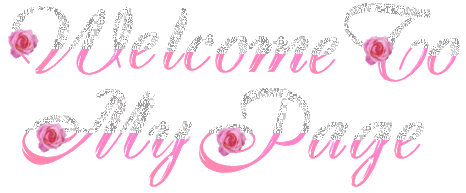
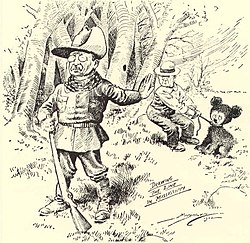



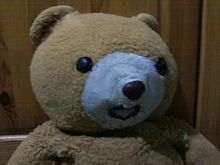

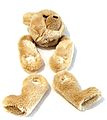


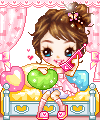
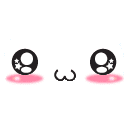


















0 comments
Posting Komentar